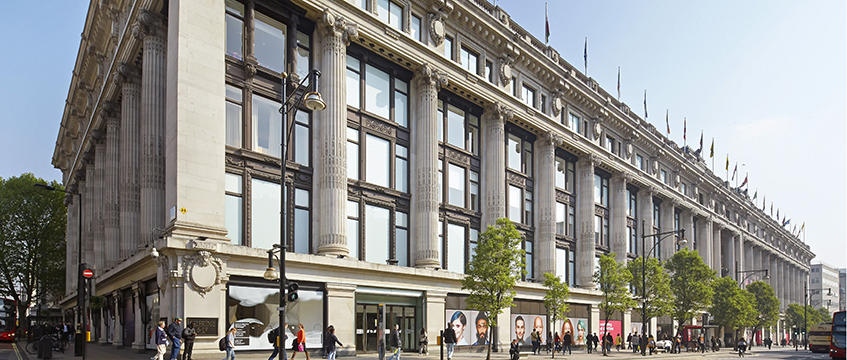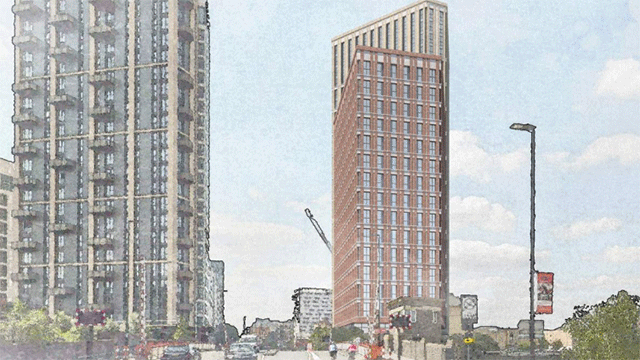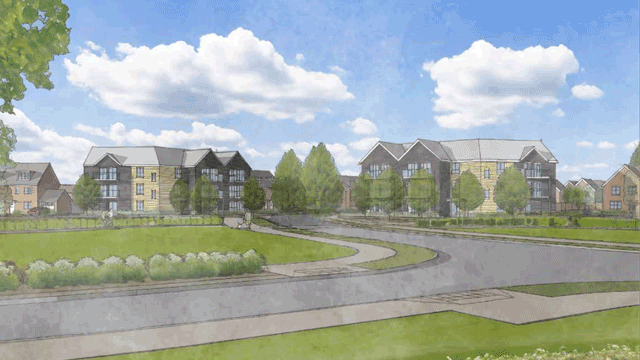Meeting the UK’s ambitious target to reach net-zero emissions by 2050 will require profound changes to many aspects of our daily lives. While electric cars and greener homes are widely discussed, an important factor is often missing from the public debate: how we plan our built environment will determine whether we reach net zero.
Spatial planning influences our daily lives more than we realise, from how we go shopping or commute to work to the type of building we live in. In densely built cities it is easier to leave the car behind: journeys tend to be shorter so they can easily be walked or cycled. Public transport also tends to be a better option for people due to higher demand. Denser housing, such as flats or terraces, is more energy-efficient and results in lower carbon emissions.
This largely explains why urban residents have, on average, a smaller carbon footprint than people living in the rest of the country – around 4 tonnes of CO2 per person is emitted each year in cities, against more than 6 tonnes for people living elsewhere (see figure 1, below).
The same pattern applies between cities. A commonly used comparison is Barcelona (pictured) versus Atlanta: both have around 5m inhabitants but Barcelona’s denser urban form results in a much lower carbon footprint per head. Here in the UK, Oxford and Telford have similar populations, but Telford’s built-up area is 61 per cent larger than Oxford’s, and its transport emissions per head are twice as high as a result. This relationship between density and transport emissions can be seen across UK cities (see figure 2, below – hover over the circles to view the cities and data).
The need for densification
So far, the UK’s approach to development has gone against the net-zero agenda. The problem is that UK cities are not very dense. Telford might not be as spread out as Atlanta, but Oxford isn’t Barcelona either, and a number of UK cities are far less dense than their European counterparts (see figure 3, below). In fact, even London’s densest neighbourhood, Maida Vale, has just over 20,000 inhabitants, compared with more than 50,000 in Paris.
A lot of this has to do with the location, over many decades, of new residential developments in the UK. They have tended to be placed on isolated greenfield land on the outskirts of cities, away from jobs and public transport infrastructure and locking people into car-dependent lifestyles.
The critique also applies to commercial property. Enterprise zones and business and retail parks built in recent years on the outskirts of cities have fuelled car dependency as they are rarely easily accessible by public transport.
Some of this can, of course, be explained by the economics: land on the outskirts of cities is usually cheaper for developers, and an out-of-town location is a better fit for businesses that need lots of space, such as warehousing.
However, deliberate policy decisions have also shaped these patterns. The case-by-case nature of planning approvals makes it harder, riskier and more expensive for developers to infill existing built-up areas.
Development is easier and faces less local opposition on farmland on the fringes of cities. Successive subsidies for out-of-town employment space, such as business rates discounts in enterprise zones, have also largely encouraged the displacement of public and private sector jobs which would otherwise have been located in a city centre.
Planning reform
Reform of the planning system is as important as direct interventions on behavioural change. This means that to reach net zero, we need to change the way cities are planned, built and managed by densifying them.
To do so, the government should press ahead with planning reform. Not only would it accelerate the construction of new, energy-efficient homes, but it would also make it easier to build denser housing such as flats or terraces on better-connected brownfield land closer to city and town centres. A flexible zoning system whereby land located near railway stations is classified as “growth area” would allow the gentle densification of places with existing transport connections.
This would in turn make transport reform much more effective – it is much easier to get people out of the car if the bus stop is close and the service regular. It is also more viable to provide a better service if more passengers use a particular bus stop or railway station.
None of these changes will be politically easy, not least because the government faces opposition from its own backbenchers and voters. But the scale of the cuts to emissions that we need to make to reach net zero leave no room for half-hearted measures.
The government needs to press on with planning changes, and local governments – which have room for manoeuvre as local planning authorities – need to support this.
Now is the time to recognise that, alongside other policies, aligning spatial planning principles with environmental outcomes will take us significantly closer to the finishing line.
Valentine Quinio is an analyst at Centre for Cities











